SAP Provisioning
Filter By
Browse By
- SAP Analytics and AI
- SAP Application Development and Integration
- All SAP Application Development and Integration
- SAP ABAP
- SAP ABAP Development Tools
- SAP ABAP Test Cockpit
- SAP API Management
- SAP BAPI
- SAP Basis
- SAP BRF
- SAP Business Application Studio
- SAP CMS
- SAP Design Studio
- SAP Development Tools
- SAP DevOps
- SAP EAI
- SAP EDI
- SAP Extension Suite
- SAP Fiori
- SAP Fiori Elements
- SAP Integration Suite
- SAP Low Code Application Development
- SAP Low Code Automation
- SAP Netweaver
- SAP Release Management
- SAP UI5
- SAP Web Application Server
- SAP Web IDE
- SAP Business Process Management
- SAP Center of Excellence
- SAP CIO
- SAP Customer Experience
- SAP Data and Data Management
- All SAP Data and Data Management
- SAP BW
- SAP BW/4HANA
- SAP Crystal Reporting
- SAP Data Archiving
- SAP Data Center
- SAP Data Governance
- SAP Data Integration
- SAP Data Migration
- SAP Data Quality
- SAP Data Services
- SAP Data Strategy
- SAP Data Visualization
- SAP Data Warehouse Cloud
- SAP DMS
- SAP Document Control
- SAP EIM
- SAP ETL
- SAP ETL Tools
- SAP HANA
- SAP HANA Administration
- SAP HANA Deployment Infrastructure
- SAP HANA Studio
- SAP Master Data
- SAP Master Data Governance
- SAP MDM
- SAP Enterprise Architect
- SAP Enterprise Asset Management
- SAP ERP
- SAP Finance
- All SAP Finance
- SAP Accounting
- SAP AR AP
- SAP Asset Accounting
- SAP Billing Systems
- SAP BPC
- SAP BRIM
- SAP Cash Management
- SAP Central Finance
- SAP Controlling
- SAP COPA
- SAP Cost Center Accounting
- SAP e-invoicing
- SAP FICO
- SAP Finance Automation
- SAP Financial Closing Cockpit
- SAP Financial Consolidation
- SAP Financial Planning
- SAP FX Risk
- SAP General Ledger
- SAP Global Tax Management
- SAP Hyperion
- SAP Order to Cash
- SAP Payment Processing
- SAP Profitability Analysis
- SAP Rebate Management
- SAP S/4HANA Finance
- SAP Universal Journal
- SAP Governance Risk and Compliance
- SAP Human Capital Management
- SAP Intelligent Technologies
- SAP Platform and Technology
- All SAP Platform and Technology
- SAP Business Technology Platform
- SAP Cloud Connector
- SAP Cloud Integration Platform
- SAP Cloud Migration
- SAP Cloud Platform
- SAP Cloud Providers
- SAP Cloud Strategy
- SAP Container Platform
- SAP Digital Asset Management
- SAP Digital Integration Hub
- SAP Digital Signature
- SAP HANA Enterprise Cloud
- SAP HEC
- SAP Hyperscalers
- SAP Infrastructure
- SAP Messaging
- SAP Smart Forms
- SAP Quality and Testing
- SAP Security
- SAP Spend Management
- SAP Supply Chain Management
- All SAP Supply Chain Management
- SAP APO
- SAP Asset Management
- SAP Business Network
- SAP Digital Manufacturing Cloud
- SAP Digital Twin
- SAP EWM
- SAP IBP
- SAP Inventory Management
- SAP Label Printing
- SAP Logistics
- SAP Manufacturing
- SAP Manufacturing Automation
- SAP MES
- SAP MII
- SAP MM
- SAP MRO
- SAP MRP
- SAP Order Management
- SAP Plant Maintenance
- SAP PLM
- SAP Production Planning
- SAP S&OP
- SAP SD
- SAP SPM
- SAP Supply Chain Planning
- SAP Track and Trace
- SAP Transportation Management
- SAP System Administration
What is Provisioning?
Provisioning is the process of setting up IT infrastructure as well as the steps necessary to manage access to data and resources and make them available to users and systems. There are several types of provisioning:
- Server provisioning is the process of setting up a server to be used in a network based on required resources.
- User provisioning is the process of granting users access rights and authorization privileges for accessing email, databases, networks, and other IT services.
- Network provisioning includes setting up a network to be accessed by users, servers, containers, and devices.
- Service provisioning includes the setup of a service and managing the data related to it.
What is Provisioning?
Provisioning is the process of setting up IT infrastructure as well as the steps necessary to manage access to data and resources and make them available to users and systems. There are several types of provisioning:
- Server provisioning is the process of setting up a server to be used in a network based on required resources.
- User provisioning is the process of granting users access rights and authorization privileges for accessing email, databases, networks, and other IT services.
- Network provisioning includes setting up a network to be accessed by users, servers, containers, and devices.
- Service provisioning includes the setup of a service and managing the data related to it.
What is SAP Provisioning?
SAP provides several provisioning tools, including
- SAP Identity Management has a provisioning framework that includes templates to use to connect SAP systems to SAP Identity Management and to set up jobs and processes for provisioning users and the corresponding assignments.
- SAP Landscape Management includes automated provisioning features for system and database clone, copy, refresh, or rename, as well as for application servers, diagnostic agents, and virtual hosts.
- SAP SuccessFactors has a provisioning tool that consultants and partners can use to set up modules for a customer.
Further Resources for SAPinsiders
Brighthouse Financial Accelerates User Provisioning Cycles. This case study explores how Brighthouse Financial moved from a manual user provisioning process using an access request feature in SharePoint to automated user provisioning using SAP Access Control. The company also employed Saviynt’s Identity Governance and Administration solution to integrate user provisioning with non-SAP applications.
How to Select the Appropriate SAP HANA Data Provisioning Tool. In this article, Haran Vinayagalingam, Practice Lead, SAP’s HANA Services Center of Excellence team, relates that SAP HANA has several data provisioning tools, such as SAP Landscape Transformation, Direct Extractor Connection, and SAP Data Services. Vinayagalingam explains how these tools can be engaged to load SAP HANA for different use cases and critical implementation steps.
Manual Provisioning of Non-SAP Roles Using SAP Access Control. In this article, Kavitha Nareshetty with Capgemini details how to minimize multiple access requests by configuring SAP Access Control to manually provision access for non-SAP applications. She relates that the manual provisioning process can be enabled following three steps: configure file path settings, configure SPRO settings, and set up the role upload process.
Vendors that can help with SAP provisioning include: Capgemini, NetApp, and Saviynt.
306 results
-

 Premium
Premium
Configure an Enterprise Business Role Concept Using SAP Access Control 5.3 and Position-Based Security
Reading time: 9 mins
ManagementLearn how to configure SAP Access Control 5.3 to use an enterprise role concept across all SAP ABAP components, Java components, and LDAP user group provisioning. Key Concept An enterprise business role is a super composite role that encompasses roles or profiles across all your SAP ABAP and Java environments. As more organizations make the…...…
-

Automating Income Tax Provisioning
Reading time: 5 mins
Read the article from the SAPinsider Special Report on Financial Transformation. Nancy Manzano of the Vertex Chief Tax Office explores data connectivity for SAP BPC users, and outlines how connecting Vertex Tax Accounting with the data in SAP BPC can dramatically improve global provisioning. Read the article to learn how Vertex can improve data accuracy…
-

Drinking Water Company Vitens Connects HR and GRC Business Roles to Achieve an 80% Automated Provisioning Rate
Reading time: 9 mins
For global organizations that serve millions of customers who depend on on-time delivery of products and services, having efficient processes to onboard new employees is critical. One such SAP customer is Vitens — a drinking water company with 1,400 internal employees that serves 5.6 million customers across five provinces in The Netherlands and maintains 49,000…
-
-

 Premium
Premium
4 Tips on How to Optimize the Bad Debt Process
Reading time: 13 mins
Learn how to adopt the standard bad debt process in SAP ERP Financials to ensure better integration to original items, better reporting, and more accurate provisioning as per various regulatory needs. Key Concept The bad debt process is a standard SAP functionality that allows you to do provisioning on the customer overdue items that are…...…
-

- SAP Access Control
 Premium
Premium
Relaxo Footwears Takes Huge Strides to Improve SAP User Management
Reading time: 12 mins
Relaxo Footwears Limited -- the largest footwear manufacturer in India -- produces roughly 600,000 pairs of shoes each day, which are sold through 900 distributors promoting 11 brands and 300 retail outlets in 125 cities across the country. Since implementing SAP Apparel and Footwear in 2009, Relaxo has more than doubled its SAP licenses, and…
-

End-to-End Identity and Access Management in the Cloud
Reading time: 7 mins
As businesses extend their technology deployments into the cloud, new security concerns arise as users start accessing business applications from an array of locations and devices. How do you protect your data? How do you ensure that users have access to the right information — and only that information? SAP addresses these concerns with two…
-

Universal Identity and Access Management for Employees and Consumers
Reading time: 15 mins
As digital technologies have expanded their reach, the task of ensuring secure authentication and identity management within business processes has become more complex. Employees are no longer the only users involved — external users, such as consumers accessing a web shop, must also be considered. To help you navigate this new reality, this article explains…
-
-

Compliant User Provisioning from Hire to Retire: How to Streamline, Manage, and Automate User Access Provisioning
Click Here to View the Session Deck. User access is constant and ever-changing. From the creation of a person’s user account, their changing roles in an organization, to the day that it gets locked or deleted, potentially hundreds of access assignment shifts will be required to make sure that a person has the right access…...…
-

 Premium
Premium
Perform Decentralized Periodic User Access Reviews with SAP BusinessObjects Access Control 5.3
Reading time: 23 mins
SAP BusinessObjects Access Control identifies and prevents access and authorization risks in cross-enterprise IT systems to prevent fraud and reduce the cost of continuous compliance and control. The User Access Review (UAR) feature of SAP BusinessObjects Access Control 5.3 automates and documents the periodic decentralized user access review by business managers or role owners. It…...…
-

- SAP SuccessFactors
 Premium
Premium
Alerts in Employee Central for User Notifications Extended to Custom MDF Objects and Processes
Reading time: 22 mins
Learn how to implement alerts in SAP SuccessFactors Employee Central to remind users to take appropriate actions as key dates and deadlines approach. Understand how to create to-do alerts and email notifications within Employee Central, leveraging workflows and business rules in SAP SuccessFactors to create system alerts based on unique business requirements. Extend the capabilities…...…
Featured Insiders
-

Javaid Awan
SAP
-

Prathyusha Garimella
Senior Engineer at SAP America, Inc.
-

James Roeske
CEO, Customer Advisory Group
Become a Member
Unlimited access to thousands of resources for SAP-specific expertise that can only be found here.
Upcoming Events
-

Register Now: SAPinsider Technovation Summit Barcelona: AI + SAP BTP
May 14 - 15, 2024
Barcelona, Spain
View Event
Related Vendors
Your request has been successfully sent

